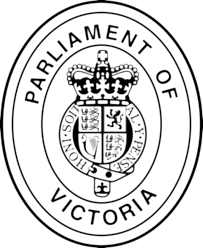
Ms PATTEN (Northern Metropolitan) (17:15): I am really pleased to speak on the Review of the Medically Supervised Injecting Room, which probably comes as no surprise to many of you in here, given my long interest in this. I must say that for many of us the announcement in this report for a second injecting room was more of a relief than a surprise. The report found that the North Richmond centre is becoming one of the busiest in the world. It is twice as busy as the Sydney centre, which really shocked me. It is now providing services for 4350 people, and that centre has seen people 120 000 times in 18 months. Let us not forget that when this centre opened we were and we still are riding a wave of heroin, not just in Victoria but globally.
The statistics are coming out of the European drug statistic agency, which is one of the most reliable in the world. It said in their drug market report just last year that international opium production has been at an all-time high. Victorian heroin deaths have increased by 225 per cent since 2012—225 per cent. So while this centre has been deemed controversial—and this report does not hold back—it is critical where it needs to be. In this report it shows that there is room for improvement; there are problems. But trends are our friends, and what we are seeing in this report is a trend down on ambulance call-outs and we are seeing a trend down on overdoses in North Richmond, and what we are seeing trends up on are people accessing treatment. Now, this has occurred since the new centre has been built, and this report, sadly, only really got to report on the first three or four months of the new centre, so I am very pleased that this report recommended an extra three years for the centre, because we do need more time for analysis and we do need more time to assess this.
Let us also remember for a minute that these are acute medical centres. The people who enter these centres are in acute medical ill health. Most of them have experienced homelessness or are experiencing homelessness. Most of them have mental health issues, most of them have overdosed numerous times before, 13 per cent of them have an Aboriginal background and almost all of them have a history of childhood trauma and abuse, so this is a cohort of people that we should not be shunning. We should care about them. We should care, and I am very pleased that we will be caring so much that will be opening another centre for more people like this. Because for some people in this chamber those lives do not matter, but for me they matter and for their families they matter. We know—and I have personally seen it—that if we can keep someone alive long enough, they will find treatment, they will come out the other end and they will be able to be reunited with their families.
If the Reason Party had anything to do with this, we would be opening five more, and the evidence is there—in fact the evidence has been there for 20 years. The ambulance call-outs show us that if we wanted to really address this, if we wanted to address the misuse of drugs and the sad, sad drug addiction of people with mental health issues, we would be opening centres in St Kilda, Dandenong, Brimbank and Geelong, to say the least, and you only have to look at the ambulance statistics that bear that out.
Now, there are lots on my wish list, but I would certainly like to see more centres. I could talk about this report for a long time. Some of the recommendations in this report are about doing things differently; they are about connecting with the community. I appreciate that for the community in North Richmond this has been tough, but it is getting better. Crime is changing there. The crime is not related to the centre, and I do not think we should always look at North Richmond through the prism of that centre. North Richmond is a space of its own, and I am very pleased that we are seeing a second centre. I commend this report. It has got some excellent work in it, and I look forward to talking about it at another time.

